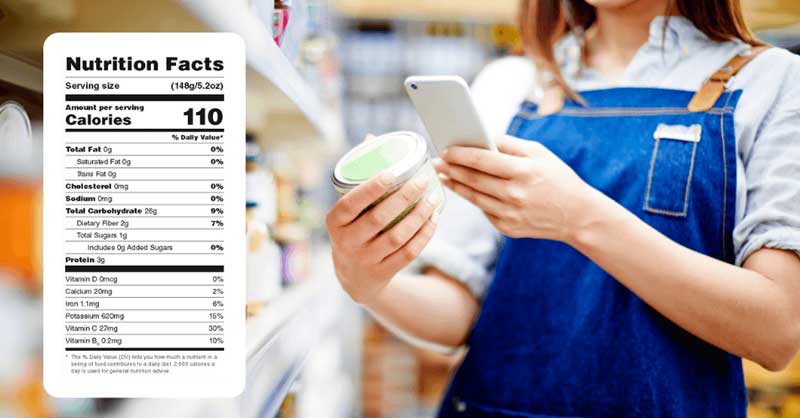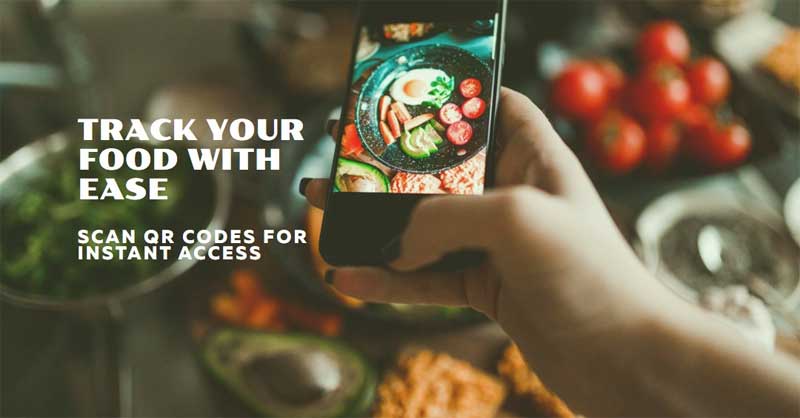The Growing Importance of Food Traceability With QR Codes
The journey food takes from farm to fork has grown longer and more complex and can be provided using Food Traceability QR Codes.
Consumers are increasingly interested in the origins of their food, driven by concerns about safety, quality, and ethics. This is where food traceability comes into play, serving as a critical tool to ensure transparency and trust in the food supply chain.
Understanding Food Traceability QR Codes
Food traceability is the ability to track the origin, handling, and movement of food products throughout the supply chain—from production, processing, and distribution to the point of sale or consumption.
This system is vital not only for quality assurance but also for managing recalls efficiently, reducing food fraud, and enhancing consumer confidence. Using Food Traceability QR Codes for this is easy and efficient and can be deployed in many different ways.
Why Traceability Matters
Imagine a scenario where a batch of lettuce is found to be contaminated.
Food Traceability QR Codes systems allow for quick identification of the product’s journey, helping isolate the issue and prevent widespread health risks.
This rapid response not only protects consumers but also limits waste and financial loss for companies by narrowing down affected products instead of resorting to massive recalls.
Usage Scenarios and Examples
Direct Farmer-to-Consumer Sales: In the age of farmers’ markets and organic stores, QR Codes on packaging can link consumers to details about the farm’s location, farming practices, and even the farmer’s story.
For instance, a small organic farm in Melbourne uses QR Codes on their produce baskets. Customers can scan these codes with their smartphones and watch videos about the farm’s sustainable practices and the harvesting process of the produce they are buying.
Supermarket Chains: Major supermarket chains use traceability systems to manage their vast inventory of products coming from various parts of the world.
For example, a leading supermarket chain in Europe uses a traceability system that allows them to track the movement of seafood from the ocean to the store. Customers can scan a QR Code next to the seafood display to learn about the catch’s date, the fishing area, and the method used, providing reassurance about the quality and sustainability of their purchase.
Restaurants Emphasizing Farm-to-Table: More restaurants are highlighting their commitment to quality and local sourcing by using traceability technologies.
A farm-to-table restaurant in California has set up a system where diners can scan a QR code on their menu to see detailed information about the ingredients in their meal, including where and how they were grown.
This practice not only enhances the dining experience but also supports local farmers and builds customer trust.
Online Grocery Shopping: Online retailers are also adopting traceability solutions to strengthen consumer trust. An online grocery platform integrates detailed Food Traceability QR Codes information for each product.
Shoppers can click on a product to view its complete history, including processing information, packaging dates, and storage temperatures. This level of detail caters to the growing consumer demand for transparency, particularly in an online setting where physical product inspection isn’t possible.

Challenges and the Future of Food Traceability QR Codes
While the benefits of food traceability are clear, the implementation can be challenging. It requires the cooperation and coordination of multiple stakeholders, including farmers, processors, distributors, and retailers.
Each step in the supply chain must be meticulously documented and shared, which can be a daunting task, particularly for smaller operators.
Moreover, there are technological and financial hurdles. Setting up comprehensive traceability systems involves significant investment in technology and training.
However, the rise of blockchain technology and Food Traceability QR Codes, promises a more seamless integration of traceability systems in the future. Blockchain can offer a decentralized and immutable ledger, ideal for maintaining transparent and tamper-proof records of food products as they move through the supply chain.
The Process Of Using QR Codes For Food Traceability
Producers can create QR Codes for food safety and traceability by implementing a few key steps. Here’s a straightforward guide to help producers, whether they are small-scale farmers or part of larger food production companies, leverage QR Code technology to enhance traceability and safety:
1. Identify the Information to Share
The first step is determining what information will be encoded in the QR code. For food safety and traceability, relevant details might include:
- Source of the product (farm name, location)
- Date of harvest or production
- Processing details (e.g., factory used, processing dates)
- Ingredients (particularly for processed foods)
- Certifications (organic, non-GMO, fair trade)
- Handling instructions
- Expiry date
2. Use a Reliable QR Code Generator
Producers should select a reliable QR Code generator that can create codes suited to their needs. QR Codes Australia understands the process and can offer Dynamic QR Codes which provide stats and marketing info to static QR Codes in bulk.
Dynamic QR Codes are especially useful as they allow the information linked to the QR Code to be updated without changing the QR Code itself.
3. Link to a Landing Page
The Food Traceability QR Codes should direct users to a mobile-friendly landing page that hosts the food product’s traceability data.
This page can be part of the producer’s website or a dedicated traceability platform. It’s crucial that the landing page is easy to navigate, loads quickly on mobile devices, and provides comprehensive information in a clear, concise manner.
4. Integrate with Supply Chain Data
For the Food Traceability QR Codes system to be effective, it needs to be integrated with the producer’s supply chain management system.
This integration ensures that the data encoded in the QR Code remains accurate and up-to-date as the product moves through the supply chain—from farm to processing facility to retail shelf.
5. Test the QR Code
Before deploying the Food Traceability QR Codes on packaging, it’s essential to test it thoroughly to ensure it scans correctly and leads to the correct webpage.
This testing should be done under various conditions using different smartphone cameras and QR Code scanning apps to ensure compatibility and ease of use.
6. Educate Consumers and Stakeholders
Producers should also educate their consumers and other stakeholders about the QR Code and how to use it.
This might involve instructions on packaging, training for retail staff, and marketing campaigns to inform consumers about the availability of traceability information and how accessing it can help them make informed purchasing decisions.
7. Monitor and Update
Finally, producers should regularly monitor the usage of QR Codes and the landing pages to which they lead.
Analytics tools can provide insights into how often QR Codes are scanned and what information is most accessed by consumers. This feedback can help producers improve the information provided and adjust their traceability practices as needed.
Implementing QR Codes for food safety and traceability not only enhances consumer trust and satisfaction but also aligns producers with modern digital practices, making their products more appealing in a competitive market.
Summary
The value of food traceability goes beyond mere compliance with safety standards. It is a vital component of modern food ethics that supports informed consumer choices, promotes quality assurance, and enhances the overall transparency of the food supply chain.
As technology evolves and consumer awareness grows, food traceability will undoubtedly become more prevalent, offering clearer insights into the food we eat and the journey it takes to reach our plates.
By embracing these systems, consumers, producers, and retailers can all benefit from a safer, more reliable food supply chain that not only meets but exceeds the expectations of today’s informed consumer.
Here at QR Codes Australia we can provide all types of QR Codes in bulk if required. We can also set up a separate site so all your customers and suppliers can use your generic site to store all your traceability documents.

